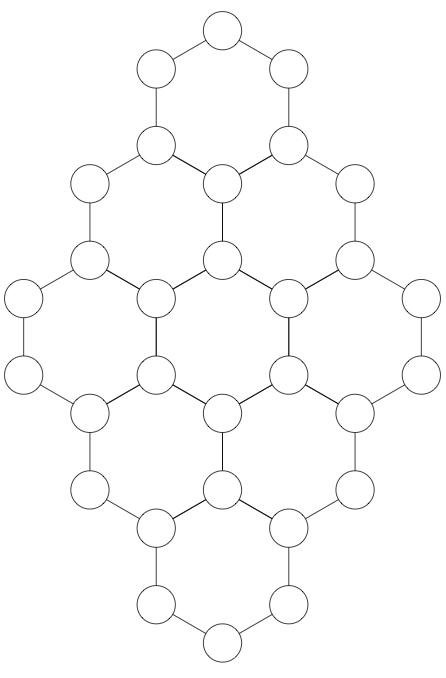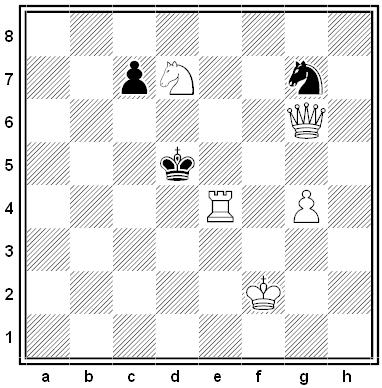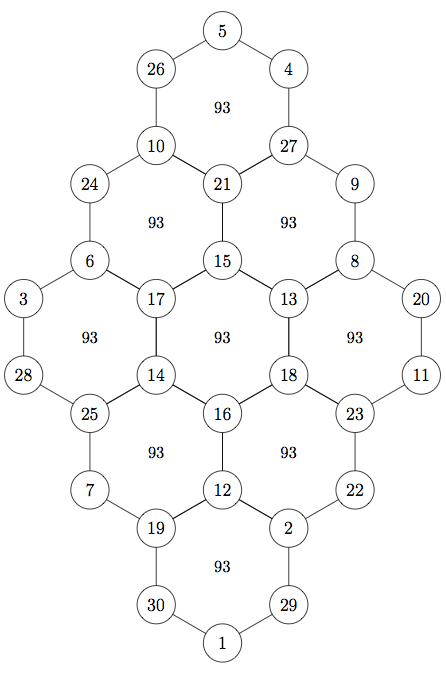Author: Greg Ross
The Beal Conjecture
In 1993, banker and amateur mathematician Andrew Beal proposed that if Ax + By = Cz, where A, B, C, x, y, and z are positive integers and x, y, and z are all greater than 2, then A, B, and C must have a common prime factor.
Is it true? No one knows, but Beal is offering $1 million for a peer-reviewed proof or a counterexample.
The Hexagonal Tortoise Problem
In the 17th century, Korean aristocrat Choi Seok-jeong proposed a puzzle inspired by the pattern on a tortoise shell: Can you assign the numbers 1 to 30 to the vertices in this diagram so that each hexagon bears the same sum?

Done

A final exam had just one question: ‘Write the best possible final exam question for this course, then answer it.’
One student immediately wrote, ‘The best possible final exam question for this course is “Write the best possible final exam question for this course, then answer it.”‘
— Jan Harold Brunvand, Too Good to Be True: The Colossal Book of Urban Legends, 2011
(Presumably the answer was “Write the best possible final exam question for this course, then answer it.”)
In a Word
caniculture
n. the rearing of dogs
naufrageous
adj. in danger of shipwreck
ridibund
adj. inclined to laughter; happy, lively
metagrobolize
v. to mystify
In January 2004 Greg Clark was making a supply run from his home on Kosciusko Island in southeastern Alaska when he radioed that his boat had lost power. With him was his constant companion, Brick, an 8-year-old Labrador retriever. After a three-day search, the Coast Guard found part of the boat’s stern on rocks on the west side of the island, which lies within the 17-million-acre Tongass National Forest.
More than a month afterward, two local fishermen were motoring past Heceta Island, several miles from the accident, when they saw a black animal on the beach. They recognized Brick, who swam to the boat and was hauled aboard. He was underweight, his leg was injured, and his fur was matted with tree sap, but he was “wiggling with joy,” according to CBS News. How the dog had stayed alive for four weeks in the harsh Alaskan winter is unknown.
A Private Fortune
Simonides, that extraordinary author of lyric poems, found an excellent remedy for his straitened circumstances by travelling around the most famous cities of the Asia, singing the praises of victorious athletes in exchange for a fee. When he had grown wealthy in this venture, he was ready to take a sea voyage and go back to his native land (he was born, so they say, on the island of Ceos). He boarded a ship, but a terrible storm (plus the sheer age of the ship) caused it to sink in the middle of the sea. Some of the passengers grabbed their money belts, while others held onto their valuables and any possible means of subsistence. A passenger who was more curious than the rest asked the poet, ‘Simonides, why aren’t you taking along any of your own stuff?’ He replied, ‘All that is mine is right here with me.’ It turned out that only a few were able to swim ashore, while the majority drowned, weighed down by what they were carrying. Then bandits arrived and took from the survivors whatever they had brought ashore, stripping them naked. As it happened, the ancient city of Clazomenae was not far off, which is where the shipwrecked people then turned. In this city there lived a man inclined to literary pursuits who had often read Simonides’s compositions and who was his great admirer from afar. He recognized Simonides simply from his manner of speaking and eagerly invited him to his house, regaling him with clothes and money and servants. Meanwhile, the rest of the survivors carried around placards, begging for food. When Simonides happened to run into them, he took one look and exclaimed, ‘Just as I said: all that is mine is right here with me, but everything that you took with you has now vanished.’
— Phaedrus (translated by Laura Gibbs)
Plaint
There was a young fellow of Trinity
Who, although he could trill like a linnet, he
Could never complete
Any poem with feet,
Saying: “Idiots!
Can’t you see
what I’m writing
happens
to be
free
verse?”
— Anonymous
Podcast Episode 220: The Old Hero of Gettysburg

In 1863, on the first day of the Battle of Gettysburg, a 69-year-old shoemaker took down his ancient musket and set out to shoot some rebels. In this week’s episode of the Futility Closet podcast we’ll follow John Burns’ adventures in that historic battle, which made him famous across the nation and won the praise of Abraham Lincoln.
We’ll also survey some wallabies and puzzle over some underlined 7s.
Common Sense

A quickie from Raymond Smullyan: On the Island of Knights and Knaves, knights always tell the truth and knaves always lie. Every inhabitant is either a knight or a knave. One day a visiting anthropologist comes across a native and recalls that his name is either Paul or Saul, but he can’t remember which. He asks him his name, and the native replies “Saul.”
From this we can’t know whether the native is a knight or a knave, but we can tell with high probability. How?
The Red Ball

An urn contains k black balls and one red ball. Peter and Paula are going to take turns drawing balls from the urn (without replacement), and whoever draws the red ball wins. Peter offers Paula the option to draw first. Should she take it? There seem to be arguments either way. If she draws first she might get the red ball straightaway, and it seems a shame to give up that opportunity. On the other hand, if she doesn’t succeed immediately then she’s only increased Peter’s chances of drawing the red ball himself. What should she do?


